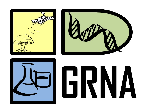Banca de DEFESA: CÁSSIA ALBUQUERQUE DE MELO SILVA
Uma banca de DEFESA de MESTRADO foi cadastrada pelo programa.STUDENT : CÁSSIA ALBUQUERQUE DE MELO SILVA
DATE: 03/11/2021
TIME: 13:00
LOCAL: https://meet.google.com/paj-vnnt-naf
TITLE:
Microbial ecology and communities associated with methane cycling in sediments from the Arapixuna floodplain, Amazon, Brazil
KEY WORDS:
Microbial ecology, Methane cycle, Metanotrophic, Methanogenic, Flooded areas, Amazon rainforest
PAGES: 41
BIG AREA: Outra
AREA: Ciências Ambientais
SUMMARY:
The methane gas (CH4) has colorless and odorless characteristics, besides presenting little solubility in water andgreat energy potential, the (CH4) together with carbon dioxide (CO2), nitrous oxide (N2O) and water vapor, form the main contributors to the greenhouse effect. CH4 comes mainly from the decomposition of organic matter by methanogenic microorganisms and its consumption by methanotrophic microorganisms. Floodplains represent themain source of non-anthropogenic CH4 produced and emitted to the atmosphere. Thus, aiming to understand the role that Amazon floodplain regions assume in the process of CH4 gas cycling, this work performed the sequencing of the 16S rRNA gene in sediment samples collected in the Arapixuna floodplain, municipality of Santarém-PA, in the periods of flood and drought of the years 2019 and 2020, with the aim of identifying the microorganisms involved in the process of CH4 production and oxidation. The results showed that there was no statistical difference between thebiological diversity indices (Richness, Diversity/Shannon and Equitability/Pielou's) among the analyzed stations, when evaluated at the DNA level. The phyla identified with abundance greater than 5% were Crenarchaeota, Acidobacteriota, Actinobacteriota, Chloroflexi, Firmicutes, Proteobacteria, RCP2-54 and Verrucomicrobiota, and the relative abundance values of the Archaea Domain was 5% and the Bacteria Domain 95%. We identified the occurrence of microorganisms with anaerobic CH4 oxidation capacity (OAM) at all studied sites in the flood period. Functional prediction of key genes linked to the CH4 cycle indicated that there was a higher relative abundance of mcrB, mcrC, mcrD, mcrG genes compared to mcrA. As well, relative abundance of pmoB, pmoC was higher relative to pmoA. The data from this study demonstrate that the microorganisms present in this floodplain use different metabolic strategies to cycle CH4, and encourage further research related to CH4 cycling in floodplains of the Amazon basin.
BANKING MEMBERS:
Externa à Instituição - ANDRESSA MONTEIRO VENTURINI - USP
Interno - 1966924 - CARLOS IVAN AGUILAR VILDOSO
Presidente - 1987988 - GABRIEL IKETANI COELHO
Interno - 1327077 - LUIS REGINALDO RIBEIRO RODRIGUES




